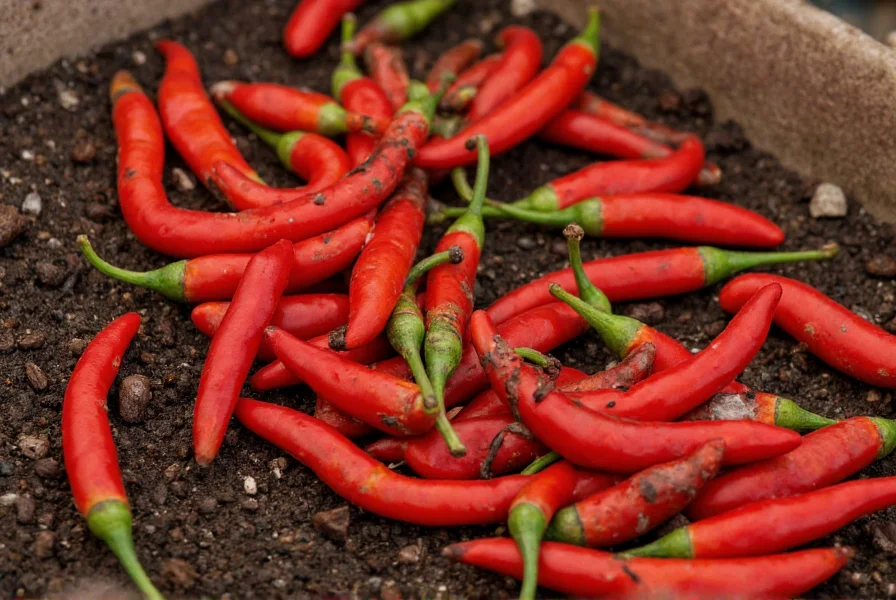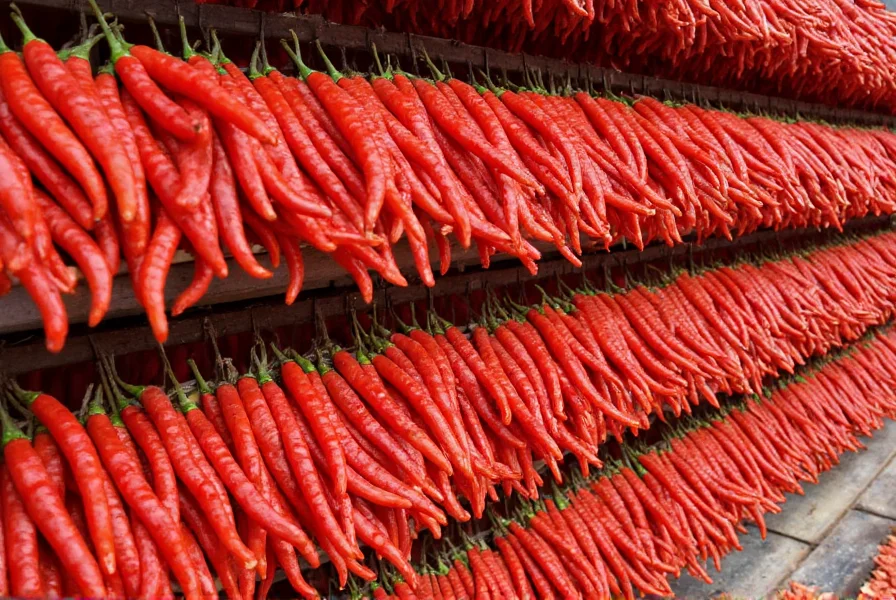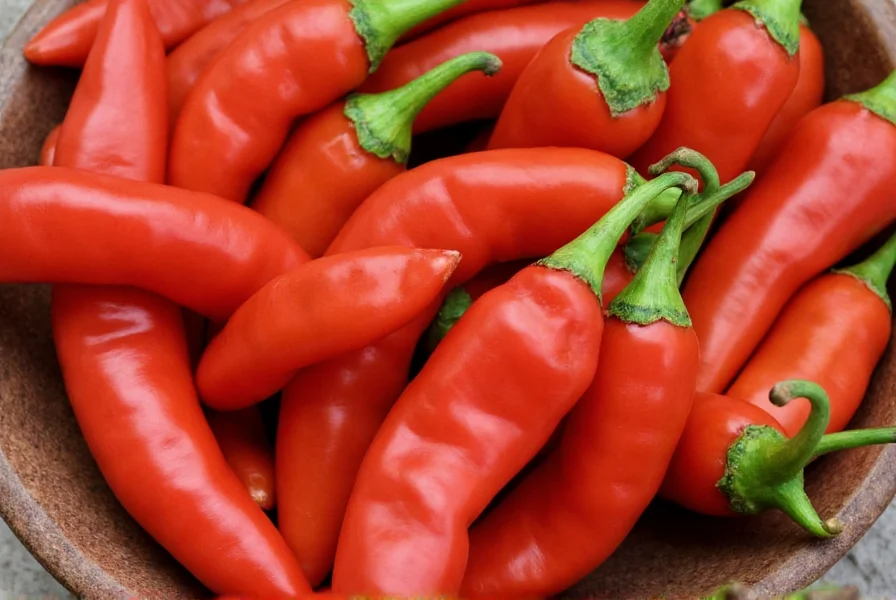Calabrian peppers have gained international recognition as a cornerstone of Southern Italian cooking. These distinctive peppers, scientifically classified as Capsicum annuum, thrive in Mediterranean climates but can be cultivated worldwide with appropriate care. Understanding how to properly handle Calabrian pepper seeds ensures successful germination and healthy plant development.
Understanding Calabrian Pepper Characteristics
Calabrian peppers typically measure 2-3 inches in length with tapered ends and vibrant red coloring when mature. Their heat level falls between cayenne and serrano peppers on the Scoville scale. Unlike many commercial chili varieties, Calabrian peppers offer complex flavor notes beyond simple heat—featuring citrusy brightness with earthy, almost chocolate-like undertones that develop fully when properly dried.
The seeds themselves contain concentrated capsaicin, making them hotter than the surrounding flesh. Many traditional Calabrian recipes intentionally include some seeds to boost both heat and flavor complexity. When saving seeds from mature peppers, proper drying and storage techniques preserve viability for future planting seasons.
Starting Calabrian Pepper Seeds Indoors
Begin your Calabrian pepper journey 8-10 weeks before your last expected frost date. These heat-loving plants require warm conditions for successful germination:
| Germination Requirement | Optimal Condition | Minimum Requirement |
|---|---|---|
| Soil Temperature | 80-85°F (27-29°C) | 70°F (21°C) |
| Light Exposure | 14-16 hours daily | 10 hours |
| Soil Moisture | Consistently moist | Avoid drying out |
| Germination Time | 7-14 days | Up to 21 days |
Use seed starting mix rather than garden soil for better drainage. Plant seeds ¼ inch deep in biodegradable pots to minimize root disturbance during transplanting. Maintain consistent moisture without waterlogging—pepper seeds rot easily in soggy conditions. A heat mat significantly improves germination rates for Calabrian pepper seeds, which struggle in cool temperatures.

Transplanting and Garden Care
Transplant seedlings outdoors after all frost danger has passed and nighttime temperatures remain above 55°F (13°C). Calabrian peppers thrive in full sun conditions with at least 6-8 hours of direct sunlight daily. When planting in your garden:
- Space plants 18-24 inches apart in rows 30-36 inches apart
- Amend soil with compost for improved drainage and nutrients
- Mulch around plants to maintain consistent soil moisture
- Avoid overhead watering to prevent fungal diseases
These peppers prefer slightly acidic soil (pH 6.0-6.8). Regular feeding with balanced organic fertilizer every 3-4 weeks supports healthy growth. Unlike some commercial varieties, authentic Calabrian peppers grow best with moderate nitrogen levels—too much promotes leafy growth at the expense of fruit production.
Harvesting and Processing Techniques
Calabrian peppers typically mature 70-80 days after transplanting. Harvest when peppers turn deep red and feel firm. Traditional Calabrian methods involve:
- Stringing peppers on twine for air drying in shaded, well-ventilated areas
- Drying for 2-3 weeks until peppers become brittle
- Storing whole dried peppers in airtight containers away from light
- Processing into 'nduja by blending with pork fat and salt
For seed saving, select the healthiest, most vibrant peppers. Remove seeds and spread them on a paper towel in a single layer. Allow to dry completely in a cool, dark place for 1-2 weeks before storing in labeled envelopes. Properly stored Calabrian pepper seeds maintain viability for 2-3 years.

Culinary Applications and Flavor Development
The unique flavor profile of Calabrian peppers develops fully through proper drying techniques. Unlike flash-dried commercial peppers, slow air-drying enhances the complex fruity notes while mellowing excessive heat. Chefs seeking authentic Calabrian flavor should:
- Rehydrate dried peppers in warm water before use for sauces
- Toast whole dried peppers briefly before grinding to intensify flavor
- Include some seeds when processing for traditional 'nduja spread
- Pair with olive oil, garlic, and fresh tomatoes for classic preparations
When substituting Calabrian peppers, consider both heat level and flavor complexity. While cayenne offers similar heat, it lacks the distinctive fruitiness. A combination of guajillo (for fruitiness) and cayenne (for heat) provides the closest approximation when authentic Calabrian peppers aren't available.
Common Growing Challenges and Solutions
Gardeners growing Calabrian pepper seeds may encounter several challenges:
- Blossom drop: Caused by temperature extremes—maintain consistent 70-85°F (21-29°C) range
- Leaf curling: Often indicates aphid infestation—spray with insecticidal soap
- Poor fruit set: Hand-pollinate flowers using a small brush during humid conditions
- Slow germination: Use heat mat to maintain soil temperature above 75°F (24°C)
Unlike hybrid varieties, authentic Calabrian peppers may show some natural variation in heat level and size—this diversity is part of their traditional character. Avoid chemical pesticides if planning to use peppers for culinary purposes.
Preserving Authentic Calabrian Pepper Quality
True Calabrian pepper seeds come from heirloom varieties passed down through generations in Southern Italy. Commercial hybrids may offer disease resistance but often sacrifice the distinctive flavor profile. When sourcing seeds:
- Look for seeds labeled "peperoncino calabrese" or "diavolicchio"
- Verify they come from Calabria region producers when possible
- Check germination rates—quality seeds should exceed 80% viability
- Store seeds in cool, dark conditions with silica gel packets for moisture control
Proper seed storage maintains genetic integrity for future growing seasons. Many Calabrian families save seeds from their best-performing plants each year, gradually adapting varieties to local microclimates while preserving essential flavor characteristics.
Frequently Asked Questions
How long do Calabrian pepper seeds take to germinate?
Calabrian pepper seeds typically germinate in 7-14 days when maintained at 80-85°F (27-29°C). Cooler temperatures significantly delay germination, sometimes extending to 21 days. Using a heat mat improves both speed and consistency of germination for these heat-loving peppers.
Can I grow Calabrian peppers in containers?
Yes, Calabrian peppers grow well in containers with proper care. Use pots at least 12 inches in diameter with excellent drainage. Container-grown plants require more frequent watering and feeding than garden-planted peppers. Place containers in locations receiving 6-8 hours of direct sunlight daily for optimal growth and fruit production.
What's the difference between Calabrian peppers and cayenne?
While both rate around 30,000 SHU on the Scoville scale, Calabrian peppers offer more complex flavor with fruity, smoky notes compared to cayenne's straightforward heat. Calabrian peppers are shorter and wider than cayenne's slender shape. Most importantly, authentic Calabrian peppers develop unique flavor compounds through traditional slow-drying methods not typically used for cayenne.
How do I properly dry Calabrian peppers for storage?
Traditional Calabrian drying involves stringing peppers on twine and hanging them in a shaded, well-ventilated area for 2-3 weeks. The slow air-drying process preserves flavor compounds better than oven or dehydrator methods. Peppers are ready when completely brittle. Store dried peppers in airtight containers away from light and moisture for up to one year.
Should I remove seeds when cooking with Calabrian peppers?
Traditional Calabrian recipes often include some seeds to enhance both heat and flavor complexity. For milder dishes, remove most seeds and white membranes. For authentic 'nduja spread and intense sauces, include 25-50% of the seeds. Remember that seeds contain concentrated capsaicin, so adjust according to your heat tolerance.











 浙公网安备
33010002000092号
浙公网安备
33010002000092号 浙B2-20120091-4
浙B2-20120091-4